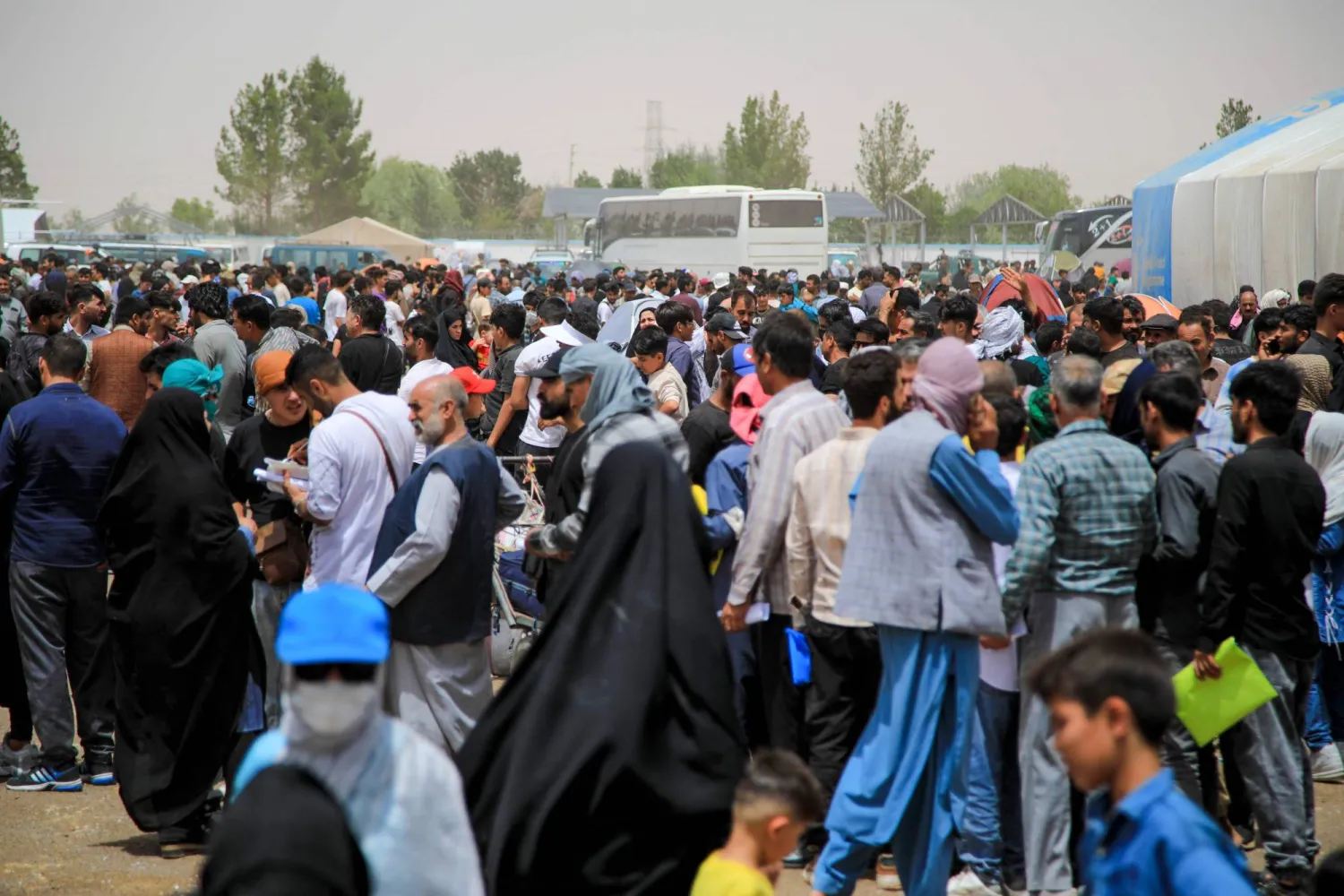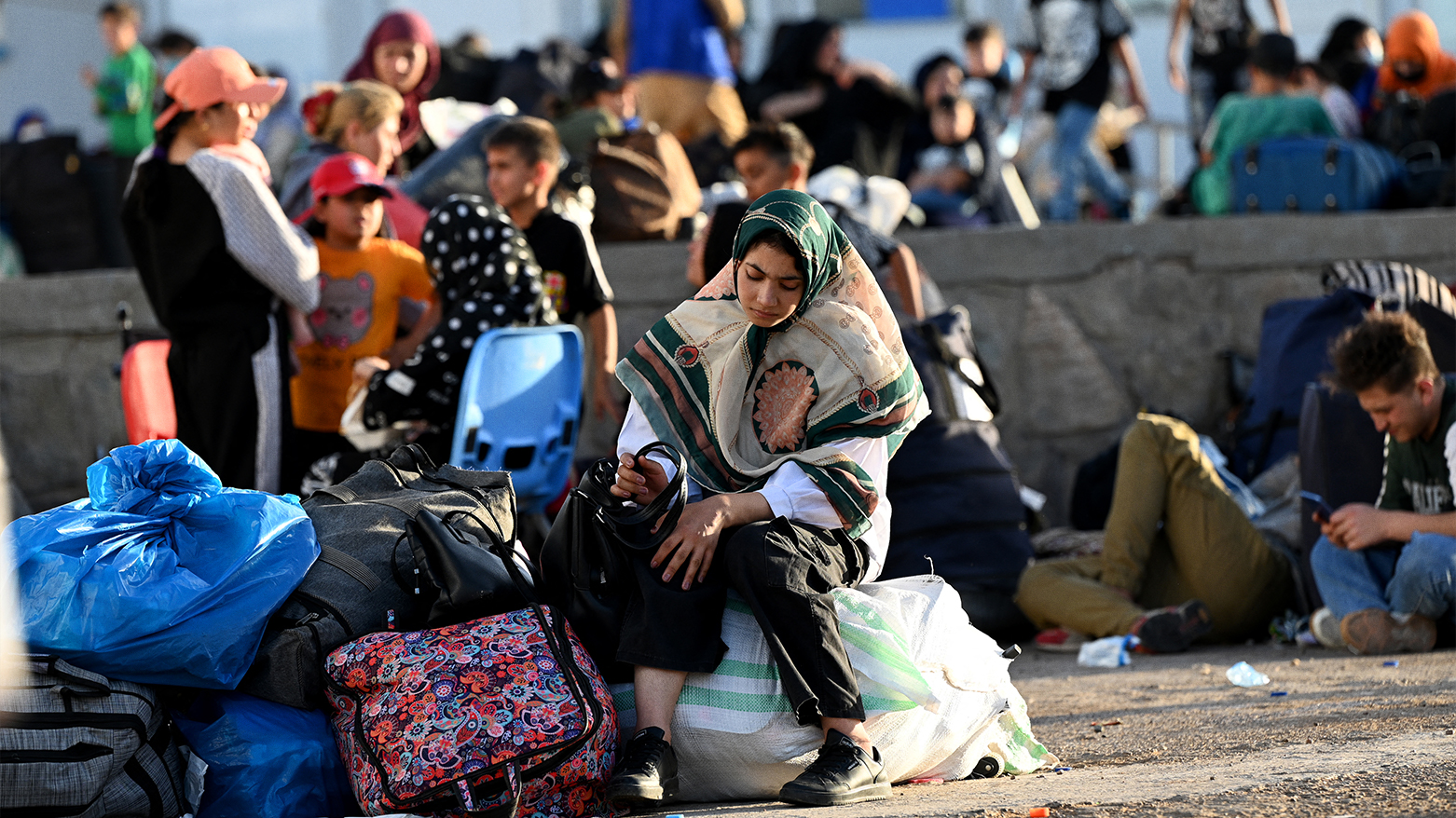Abuse and Deportation: Why Iran Completely Changed Its Policies Toward Afghan Migrants

“In just seven months, more than 1.5 million Afghans have returned from Iran to Afghanistan.”
Iran accelerated the deportation of Afghan migrants following its war with “Israel”, while some of whom were accused of spying for Mossad.
The Iranian regime appears to be using these migrants as scapegoats under the pretext of protecting the country's national security.
Human rights organizations have expressed concern about the indiscriminate targeting of Afghan refugees, especially in light of the ongoing humanitarian situation in Afghanistan.
In light of these developments, Iran appears to be reshaping its policy toward foreigners within its borders, prioritizing security over humanitarian considerations.
In a related context, many Afghans have reported experiencing various forms of pressure and violence by Iranian authorities, including being forced to leave their property before being placed in detention centers awaiting deportation.
The sudden increase in deportations and allegations of Afghan spying have drawn international condemnation.
Iranian media reports have incited discrimination and violence, insulted Afghans and minorities, and labeled them as traitors.
Mass Deportations
In March, the government said undocumented Afghans would be deported and set a July 6 deadline for voluntary departures, a measure affecting approximately 2 million of the 6 million Afghans living in the country.
UN High Commissioner for Human Rights Volker Turk recently stated that in just seven months, more than 1.5 million Afghans have returned from Iran to Afghanistan. Of these, 938,000 or 60% were deported – including 500,000 since 13 June.
He called for an immediate halt to deportations, emphasizing that the return of migrants must be voluntary and dignified.
It is noteworthy that the majority of Afghans residing in Iran had arrived to escape the decades-long war in their country, to receive medical treatment, or for economic reasons. Some came as a transit point to Turkiye, and from there to Europe.
Afghan Foreign Minister Amir Khan Muttaqi described the deportation of Afghans from Iran as painful and humiliating.
He said in statements that Iranian authorities had begun deporting Afghans randomly, noting that his country was not prepared to receive such a large number of returnees.
He noted that his country had repeatedly asked Iranian authorities for the deportation to be gradual and to preserve the dignity and property of the returnees.

These measures come amid political tensions and economic pressures facing Iran, as well as human rights warnings of increased deportations of Afghans back to their country, which is experiencing the second largest humanitarian crisis in the world.
The Iranian government has defended its ongoing mass deportation of Afghan migrants, describing the policy as a public demand and an economic necessity.
While the Iranian government claims that it is only deporting undocumented Afghans, reports suggest otherwise.
Some of those deported are legal residents living in Iran for decades, others have reported that their documents were torn up by officials.
Earlier this year, the Iranian government cancelled the census cards previously issued to approximately two million Afghan citizens, which provided them with semi-legal status.
This move effectively deprived hundreds of thousands of migrants of any formal protection and opened the way for large-scale deportations.
Returnees, including refugees with valid legal documentation for being in Iran, describe being arrested by the police at their workplaces or seized on the street, then forced onto buses and held in detention centers before being transported to the border.
They also relate endless extortionate demands for bribes to get out of detention centers, onto buses or finally to get across the border.

Security Reasons
Earlier this month, Iran entered full implementation of its program to deport undocumented Afghan migrants, a controversial step that authorities consider a legal measure to regulate the status of foreigners.
This move came amid a tense domestic context following the Israeli attacks on Tehran and the subsequent widespread security campaigns and arrests of citizens and foreigners on charges, some of which relate to spying and leaking military information.
Iranian officials have leveled accusations against Afghan migrants, alleging that a number of them worked as informants and mercenaries in the assassinations of military leaders and nuclear scientists, as well as collaborating with Mossad to prepare and transport combat drones.
These accusations sparked anger in the Iranian street against the Afghans, transforming an existing policy into a national demand driven by security concerns, leading to an intensification of the expulsion of Afghans.
Later, a curfew was declared for Afghan refugees in some Iranian cities, such as Kermanshah.
Iranians there were also prohibited from employing or renting homes to Afghans, and hundreds of them were arrested.
The authorities also asked Iranians to report any Afghans so they could be transferred to special deportation centers.
Under these conditions and Iranian measures, the rate of Afghan deportations to their country increased dramatically, recently reaching more than 40,000 people per day.
This is not the first time that Afghan refugees have been accused of being recruited by “Israel”.
After the devastating twin suicide bombings in Kerman in January 2024, Iran’s government linked the attack to Afghan nationals.
It is noteworthy that the Tehran authorities consider the Afghan presence an additional burden, as there is no international financial or logistical support to accommodate these refugees, estimated to number in the millions.
Despite this, Iran has benefited from young Afghans in recent years, recruiting them to fight alongside its militias in Iraq and Syria.

Widespread Implications
The government of Iranian President Masoud Pezeshkian, which came to power in 2024, has articulated an even more firm resolve to reduce the country's Afghan population.
The Afghan question became a central issue during the 2024 election season.
While Afghan migrants have lived in Iran since the late 19th century, the Soviet invasion of Afghanistan in 1979 led to refugees fleeing to Iran in numbers, with continuous waves of migration over the past four decades, most recently after the Taliban takeover in 2021.
Observers believe that the historical, cultural, geographical, religious, and even ethnic proximity between Iran and Afghanistan are major reasons behind Afghan migration to Iran.
For example, most Afghans speak Persian, a factor that also played a significant role in their arrival and residence in Iran.
In Iran, there are differing views on the widespread expulsion of Afghans and some of the violent actions against them.
Some individuals and groups are demanding respect for the human rights of Afghans, taking into account the full implications of expelling this large community from Iran.
The Iranian Writers' Union accused the Iranian government of bias against Afghans, criticizing the racist treatment of them.
In a statement, 1,300 Iranian and Afghan journalists and artists demanded an immediate end to the Iranian government's policies of intimidation and mass expulsion of Afghans.
Fereshteh Hosseini, an Afghan Iranian actor, appeared at the Karlovy Vary film festival this month, advocating against the mass deportation of Afghans from Iran.
The Nobel Peace Prize laureate Narges Mohammadi has attacked the mass deportation of Afghan migrants as contradicting humanitarian principles and Iran’s international obligations.
A group that tracks executions has warned about an uptick in executions of Afghans in Iran.
Others warned that the use of violent expulsion by military and police forces could lead to every Afghan carrying with them a great deal of anger, hatred, and resentment against Iran.

At the same time, opponents of the Afghan presence in Iran support a policy of intensifying their expulsion, arguing that they are numerous, their daily expenses are high, and their presence in queues at bakeries and on public transportation is displeasing to some Iranians in cities.
Unemployment is high in Iran, while Afghans are taking jobs from Iranian workers. Their low-wage employment has also led to lower wages and reduced incomes for the Iranian working class.
Afghans benefit from government subsidies funded by Iranian taxes, such as subsidies on bread, food, water, electricity, and gas.
The new wave of migration has also increased pressure on the housing sector and led to a general rise in rental prices, tightening the noose on Iranian tenants.
Sources
- Afghanistan: Returns of Afghans creating multi-layered human rights crisis
- Iran Has a Mass-Deportation Policy Too
- Iran Carries Out Mass Expulsion of Afghan Refugees
- Iran uses Israeli bombings to speed up Afghan expulsions
- Iran Says Expelling Afghan Migrants Is Public Demand and Key to Economic Regulation











